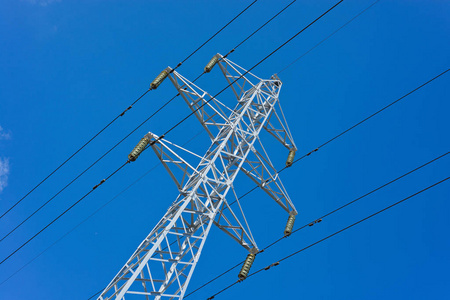Introduction
In our rapidly advancing world, the demand for electricity continues to rise, leading to an increased reliance on power cables to transmit electrical energy. However, this escalating need for power has put a strain on our environment, as traditional power cables often contribute to pollution and resource depletion. In response to these challenges, the development of environmentally friendly power cables has emerged as a promising solution to mitigate the environmental impact of energy transmission. This article explores the significance of environmentally friendly power cables, their benefits, and the technologies driving their innovation.
The Need for Sustainability in Power Cables
Traditional power cables, which are predominantly made of materials such as copper and aluminum, have long been the backbone of electrical infrastructure. While effective in transmitting electricity, these cables come with a significant environmental cost. The extraction and processing of raw materials like copper and aluminum result in substantial energy consumption and emissions of greenhouse gases. Furthermore, the disposal of old or damaged cables adds to the growing problem of electronic waste, contributing to pollution and resource depletion.
As Power Cable Manufacturer recognizes the urgency of addressing climate change and promoting sustainability, the need for environmentally friendly power cables has become more apparent. These cables are designed to minimize environmental impact throughout their lifecycle, from manufacturing and installation to operation and disposal. By incorporating innovative materials and technologies, environmentally friendly power cables offer a greener alternative to traditional cable systems, helping to reduce carbon emissions and preserve natural resources.
Key Benefits of Environmentally Friendly Power Cables
1. Energy Efficiency: One of the primary advantages of environmentally friendly power cables is their enhanced energy efficiency. By utilizing advanced materials that have lower electrical resistance, these cables can transmit electricity more effectively, resulting in reduced energy losses during transmission. This improved efficiency not only helps to lower electricity costs but also decreases the overall carbon footprint of power systems.
2. Reduced Environmental Impact: Environmentally friendly power cables are designed to minimize their environmental impact across various stages of their lifecycle. From the use of sustainable materials to energy-efficient manufacturing processes, these cables are engineered to reduce greenhouse gas emissions, energy consumption, and waste generation. By choosing environmentally friendly power cables, organizations can demonstrate their commitment to environmental stewardship and contribute to a more sustainable future.
3. Longevity and Durability: Another key benefit of environmentally friendly power cables is their longevity and durability. By incorporating high-quality materials that are resistant to corrosion, wear, and environmental factors, these cables have a longer lifespan compared to traditional cables. This increased durability not only reduces the frequency of replacements but also minimizes the environmental impact associated with manufacturing and disposing of new cables.
4. Flexibility and Adaptability: Environmentally friendly power cables are designed to be flexible and adaptable to a wide range of applications and environments. Whether used in urban settings, industrial facilities, or renewable energy projects, these cables can be customized to meet specific requirements and performance standards. Their versatility makes them ideal for integrating renewable energy sources, smart grid technologies, and other innovative solutions aimed at promoting sustainability in the energy sector.
Technologies Driving Innovation in Environmentally Friendly Power Cables
1. Renewable and Recycled Materials: One of the key technologies driving innovation in environmentally friendly power cables is the use of renewable and recycled materials. By incorporating materials such as bio-based polymers, recycled plastics, and sustainable metals, manufacturers can reduce the environmental impact of cable production and decrease reliance on finite resources. These materials offer comparable performance to traditional materials while significantly lowering the carbon footprint of power cables.
2. Smart Grid Integration: The integration of smart grid technologies is another important innovation in environmentally friendly power cables. Smart grids enable real-time monitoring, control, and optimization of power distribution, allowing for more efficient and sustainable energy management. By incorporating sensors, communication systems, and advanced analytics into power cables, smart grids can improve system reliability, reduce energy losses, and enhance overall grid resilience.
3. High-Temperature Superconductors: High-temperature superconductors represent a cutting-edge technology that is revolutionizing the design of power cables. These superconducting materials can transmit electricity with minimal resistance, leading to significantly lower energy losses compared to conventional cables. By harnessing the unique properties of high-temperature superconductors, manufacturers can develop power cables that are highly efficient, compact, and environmentally friendly.

4. Nanotechnology Applications: Nanotechnology is playing a vital role in advancing the sustainability of power cables. By leveraging nanomaterials such as carbon nanotubes, graphene, and nanocomposites, manufacturers can enhance the electrical conductivity, mechanical strength, and thermal stability of cables. These nanomaterials enable the development of lightweight, high-performance cables that are well-suited for renewable energy applications and demanding operating conditions.
Conclusion
As the world transitions towards a more sustainable energy future, the importance of environmentally friendly power cables cannot be overstated. By embracing innovative materials, technologies, and design principles, these cables offer a greener and more efficient alternative to traditional cable systems. From reducing energy losses and carbon emissions to promoting resource conservation and grid resilience, environmentally friendly power cables play a crucial role in advancing sustainability in the energy sector. As organizations and policymakers prioritize environmental stewardship and decarbonization efforts, investing in environmentally friendly power cables is a strategic step towards building a more sustainable and resilient electrical infrastructure for future generations.
